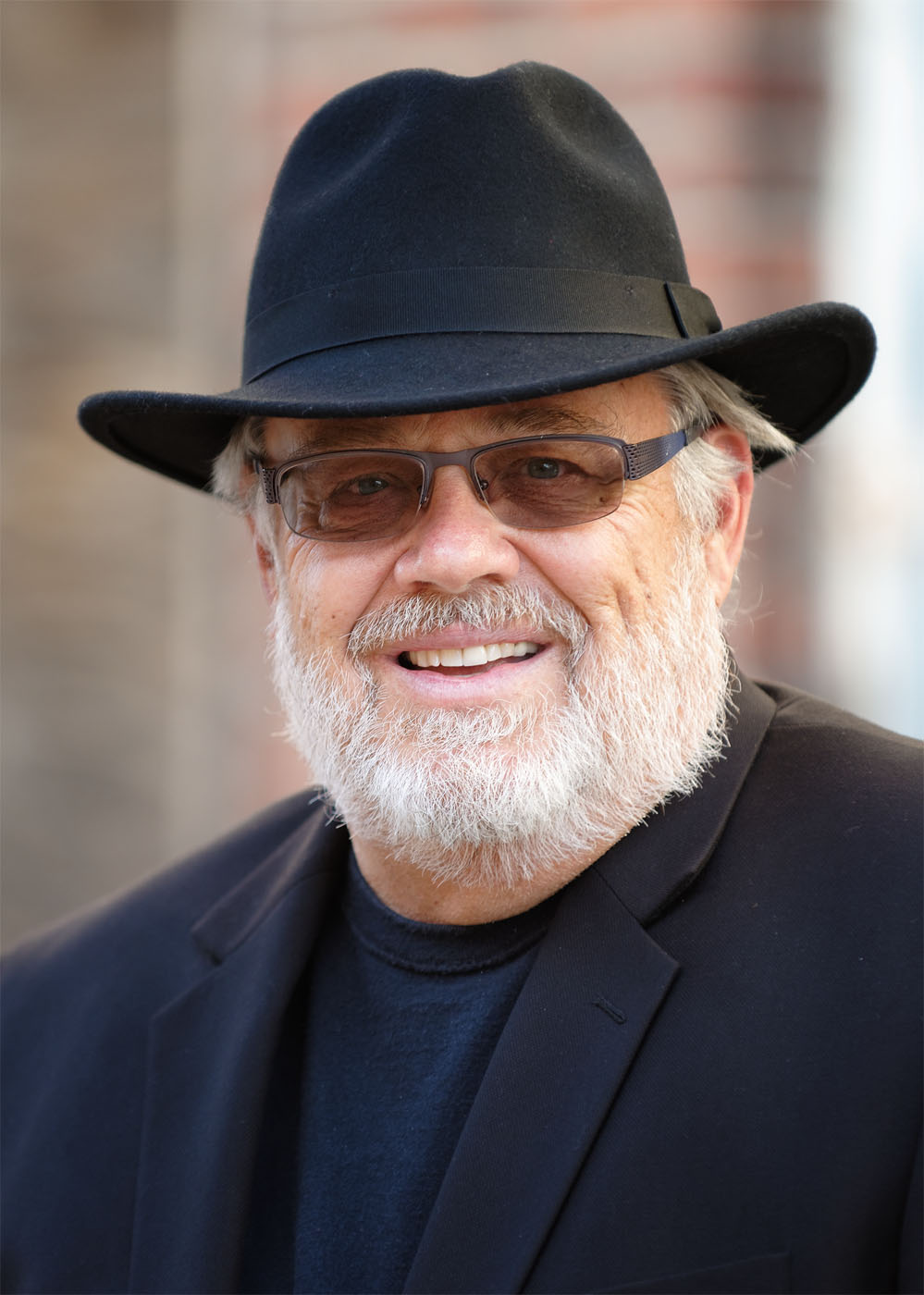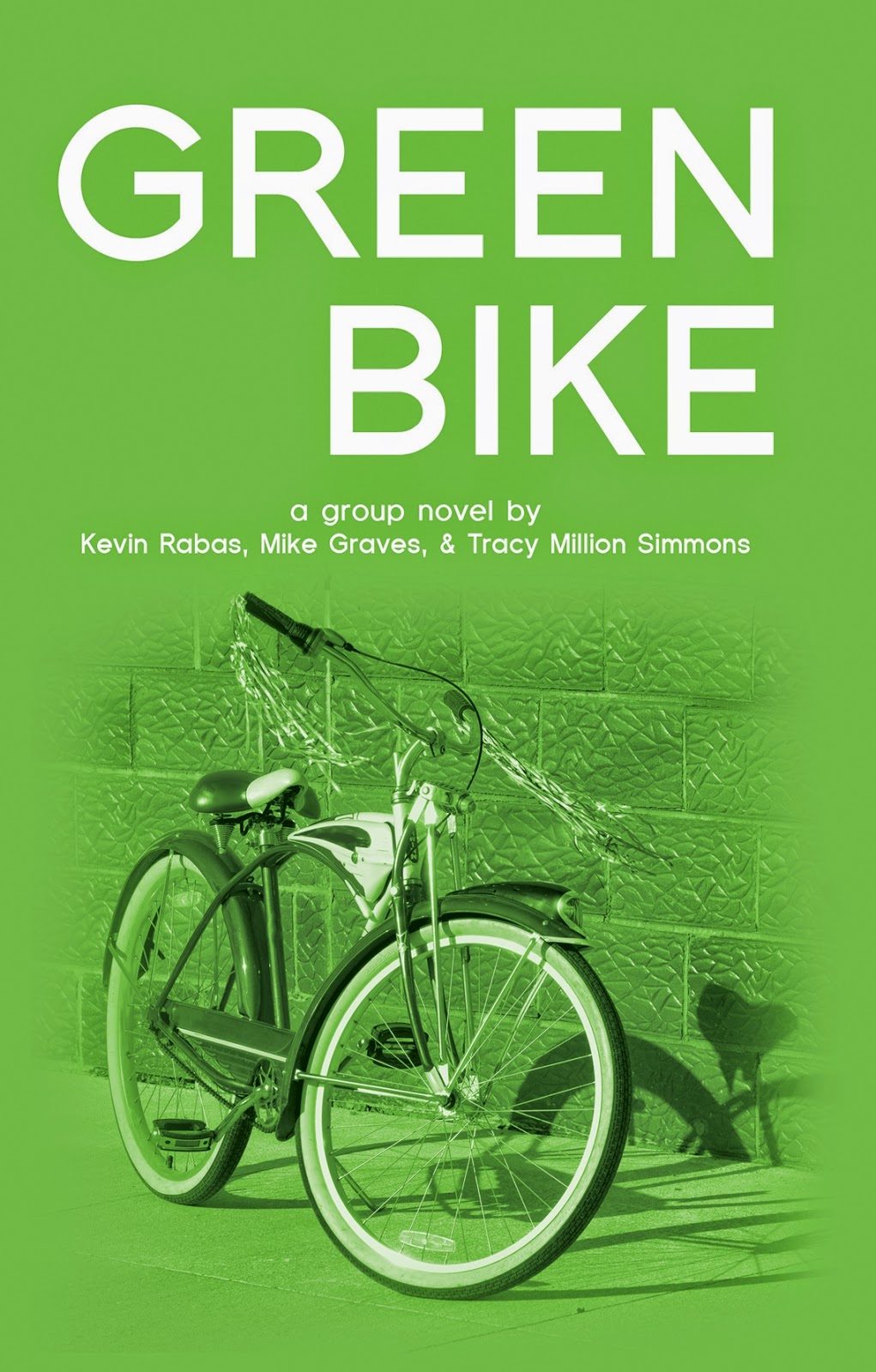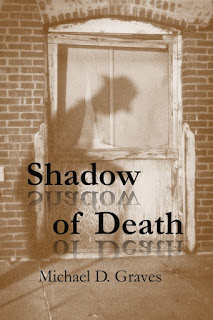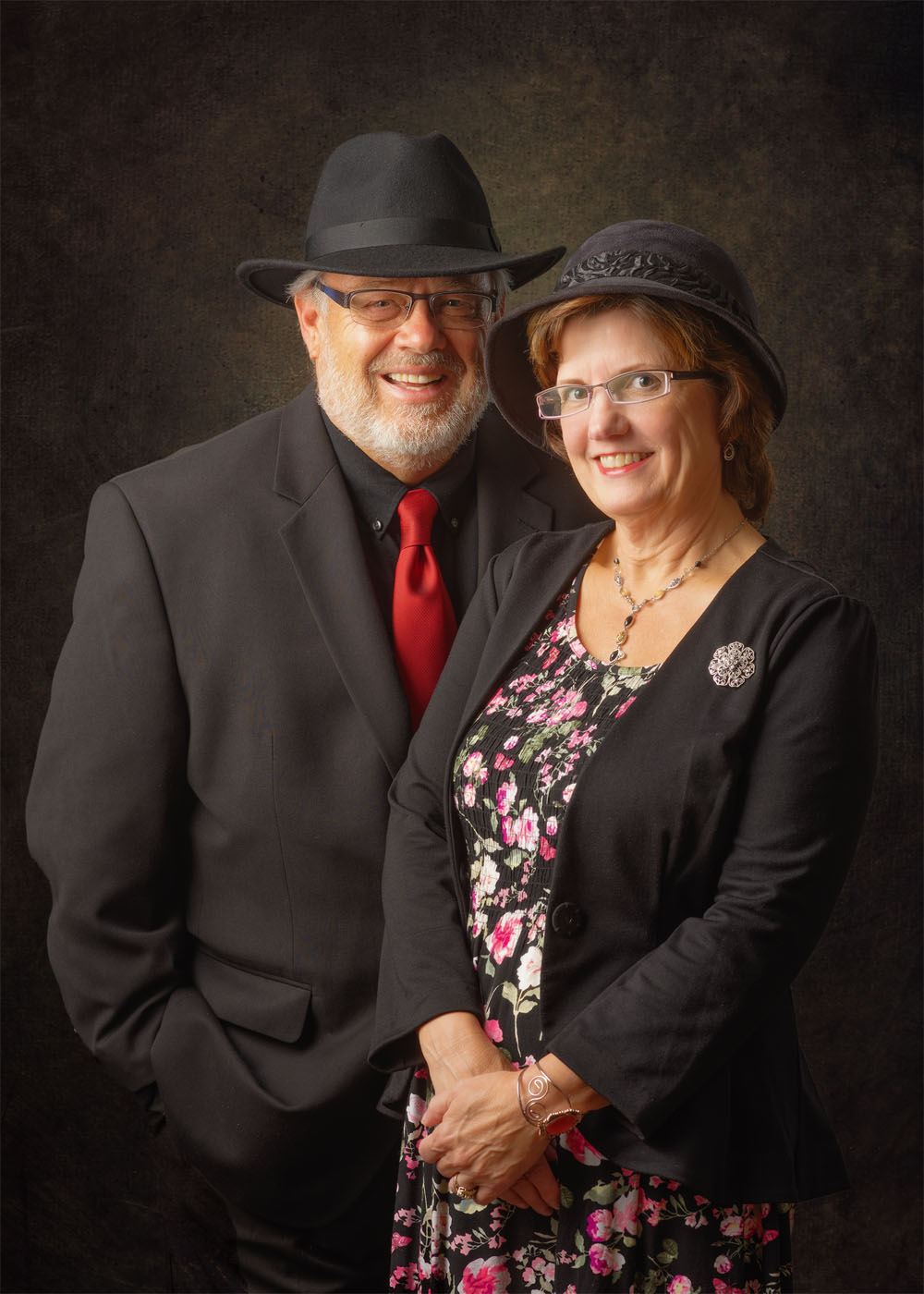Michael D. Graves has written three books, all published by Meadowlark Books of Emporia, Kansas: Green Bike (with co-authors Kevin Rabas and Tracy Million Simmons) was published in 2014, To Leave a Shadow in 2015 (a 2016 Kansas Notable Book), and Shadow of Death in 2017.
Mike and his wife Monica live in Emporia. He recently retired from Emporia State University where he taught Intensive English and TESOL (Teaching English to Speakers of Other Languages) courses.
I’m so happy to get the chance to interview you, Mike, happy to be able to help spread the word about you and your books.
Thank you, Cheryl. I’m honored to be asked. My friends and readers have given me generous support, and I’m grateful to you and to all of them.
Your first book was Green Bike. This was a group novel that you and Tracy Million Simmons and Kevin Rabas wrote in the earlier days of our Emporia Writers group. You and Kevin alternated chapters and mostly made up the story on the fly, with Tracy adding the occasional chapter. It was fun to watch that story unfold online a bit every day, chapter by chapter.
Tracy adding the occasional chapter. It was fun to watch that story unfold online a bit every day, chapter by chapter.
As a writer, what did you gain from that experience of collaborating with friends?
Writing a group novel was new to me, and it was a truly rewarding experience. I wonder if my character, Pete Stone, would live in my novels today if I hadn’t first worked with Kevin and Tracy on Green Bike. Kevin tossed out the idea of using a green bike as a MacGuffin, a thread to run through our stories and tie them together. We could use it or not use it as we saw fit. It turned out to be perfect for our collaboration. Tracy wrote a touching backstory about the relationship between a dying mother and her son and how the bike helped them through their situation. Kevin’s characters and my characters, students and faculty at Kansas State University, shared the bike as their lives intertwined.
You mentioned that Kevin and I made up our stories on the fly, and that is correct. The beauty of participating in this exercise was in not knowing exactly what would happen next. We went to our computers each day and read what the other had written. We added to that story or continued on our own, depending upon our moods and our characters’ situations. In that respect, I think our stories unfolded like life itself. We all have plans for our days, but how often do our lives go according to plan? We deal with life as we live it.
It surprised me that working on our group project increased my personal writing productivity. After adding five or six hundred words to Green Bike, the juices would flow, and I’d continue writing on other projects. Rather than take time from my own work, the group exercise stimulated me and made me more productive. Writing can be a lonely occupation, and this collaborative effort was a wonderful opportunity to interact with others. I’ll always be grateful for the experience of working with Kevin and Tracy. I recommend this type of exercise for other writers, too.
One thing that made me smile as I read your Pete Stone detective novels (To Leave a Shadow and Shadow of Death) was an occasional “green bike” mention. A kid rode past Pete Stone on a green bike in the first book, and in the second book, the newspaper carrier had a green bike. For me, that was a quiet nod to your Green Bike book and your fellow collaborators. Or, at least I assumed the green bike mention was deliberate. Am I right? 🙂
You are a careful reader, Cheryl, and you are correct. In both of the Pete Stone novels, I reference details that mean something to me and I hope add to the story. Rusty, the paperboy, rides a green bike, and, yes, it’s a reference to the group novel. Rusty’s description and age fits that of my father, a redheaded boy of thirteen in 1937. Like Rusty, my father once delivered newspapers in Wichita, and in the third book, which I’m writing now, Rusty will celebrate his fourteenth birthday in October 1937, as did my dad.
Other recurring details in both books include a meadowlark singing in the country, a subtle thank you to Tracy Million Simmons and Meadowlark Books for publishing my work. References to jazz music are a tip of the hat to Kevin Rabas, who we know is a noted jazz drummer in addition to being a writer of poetry and prose. He often combines his music and his poetry in his performances. In the second book, a scene takes place in Hot Springs, Arkansas that involves a jazz combo, the Ivana Kerbs Trio. Ivana Kerbs is an anagram of Kevin Rabas.
There are other references, too. I was in a now defunct coffeehouse in Wichita writing notes on my first book, and I needed a place for Pete Stone to have an office. I looked out the window and saw a unique corner-front building across the street. Carved in stone at the top of the building was its name, “Lawrence Block,” also the name of one of my favorite authors. When I read that, I knew Pete Stone had an office location.
I have an odd sense of humor, and some details in my books are corny, but they give me a chuckle. And, hey, no one told me that writing shouldn’t be fun.
In 2016 your book To Leave a Shadow received the Kansas Notable Book Award. In a presentation at the event, you told the 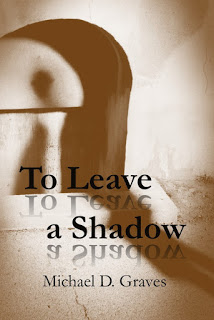 audience that a major inspiration for the book was your grandfather. Would you tell us about your grandfather and why your Pete Stone mysteries are set in Wichita in the 1930s?
audience that a major inspiration for the book was your grandfather. Would you tell us about your grandfather and why your Pete Stone mysteries are set in Wichita in the 1930s?
You have a good memory, Cheryl. When my grandfather died, his last words to my father were, “Tell the boys not to forget me.” I was a teenager then, and a half-century later, I recalled those words. I realized that I hadn’t forgotten my grandfather, but I never got to know him well, either, primarily due to time and geography. My dad’s work took us to different parts of the country, and we didn’t live close to my grandparents. I thought it might be fun to make up a story as a token to his memory. I’ve always been fascinated by the Depression decade in our country and the resilience and tenacity of those survived it, so my story places Pete in 1930s Wichita.
My grandfather’s name was Pete Graves. The transition to my detective’s name was Pete Graves > gravestone > stone > Pete Stone. When I began writing the story, I didn’t have my grandfather’s exact date of birth or death, so I used those of Dashiell Hammett, one of my favorite authors and the creator of detective Sam Spade. I knew that Hammett’s life span and my grandfather’s life span were similar. Dashiell Hammett lived from 1894-1961. My grandfather, I’ve since learned, lived from 1892-1967. That puts Pete Stone in his mid-forties in 1937, which is what I wanted. In addition to writing about Pete and the cases he solves, I enjoy researching 1930s Wichita and bringing in background story to give the reader a sense of time and place during that remarkable decade.
When you’re developing a novel, does your mind often go to Pete Stone and his story when you’re, say, driving or having lunch? Do you spend a lot of non-writing time thinking about what’s next for your characters?
I discussed this question with my wife, Monica, and we both had a laugh. The answer is yes, yes, yes. I’m often alone with Pete and his stories. Monica, bless her, knows this, and she’s patient with me. When we’re driving together, she knows she can’t ask me something and get a quick response. First, she has to get my attention. She’ll often mention something to me, and several moments later, I’ll reply. It takes a while for her comment to work its way through the queue.
I’m occasionally accused of having poor hearing, but conversations I miss are generally due to a preoccupied mind. When I’m writing, Pete lives inside of me. He wakes me up in the morning, sometimes way too early, which miffs me, but he’s in charge. I rewrite scenes inmy head. A detail about a time or place in the story comes to me, and I realize it won’t work or I’ve left something out. If I’m driving with Monica and something comes to me, I’ll ask her to text me a word or a phrase, for example, “Austrian Zappler clock,” as a reminder for later when I’m at my desk. No matter how odd my request, she sends a text message without questioning its meaning because she knows it has something to do with the story.
I welcome Pete’s presence in my mind as an escape from everyday absurdities. As a writer yourself, I’m sure you’ll agree that it’s quiet moments away from the keyboard that bring our stories to life. My stories come to me on a walk or a drive or a quiet time when I’m alone. I’ve read your wonderful poetry and essays, and I’ve imagined you and Dave together capturing images in the countryside, his on film and yours on paper. Monica and I talk about this often. When we’re quiet, we’re never far from our stories.
Your Pete Stone detective novels are set in Wichita and Stone seems to have a genuine fondness for the city. You’ve mentioned that your grandfather lived in Wichita – did you grow up there yourself?
 I was born in Wichita, but we moved when I was less than a year old. Pete’s address on Lewellen Street is taken from my birth certificate. I’m fairly certain that my folks lived upstairs from my grandparents when I was born. My dad was an office manager, and his company transferred him to a new plant every couple of years. I went to eight schools in six states before I left home for college. However, like Pete, I’ve always had a fondness for Wichita and writing these stories has led me to learn about and appreciate the city even more.
I was born in Wichita, but we moved when I was less than a year old. Pete’s address on Lewellen Street is taken from my birth certificate. I’m fairly certain that my folks lived upstairs from my grandparents when I was born. My dad was an office manager, and his company transferred him to a new plant every couple of years. I went to eight schools in six states before I left home for college. However, like Pete, I’ve always had a fondness for Wichita and writing these stories has led me to learn about and appreciate the city even more.
In Shadow of Death, Pete Stone takes a trip to Hot Springs, Arkansas. I’ve been there numerous times myself so I could easily picture the Arlington Hotel and Central Avenue where the curio store was. You seem to have captured both Wichita and Hot Springs well. What kind of research did you do to figure out what these two cities, their buildings and businesses were like in 1930s?
I used Hot Springs for a number of reasons. Monica and I have visited the city several times, and it has enthralled us each time we visit.
We enjoy staying at the Arlington Hotel for its history and ambience. We have drinks on the veranda, soak in mineral spring baths, dine on good food, and listen to local music. We also stroll along the city’s sidewalks and try to visit areas that may be overlooked by other tourists.
Pete Stone (and I) are baseball fans, and Hot Springs was the birthplace of baseball’s spring training. Major League teams and Negro League teams practiced there during the early months of the year. Once during a meal downtown, I asked the waitress if she knew the history of the building. She grinned and said it had been a brothel. I had a mental image of Babe Ruth in training, his regimen including speakeasy booze, loose women, rich food and long soaks in the baths to exorcise the demons so he could do it all over again.
Hot Springs had a history of catering to criminals in the 1920s and 30s. Al Capone visited often along with others of his profession. My character, Evan “Vinny” Vincent in the second book is loosely based on Owen “Owney” Vincent Madden, a real-life gangster who retired to Hot Springs after being booted out of Manhattan in 1935. I enjoyed writing about him, and I confess I fell in love with Carina and her curio shop, too.
Ralph Waldo played a minor role in To Leave a Shadow, but I wanted him to play a larger role in Shadow of Death. In the second book, 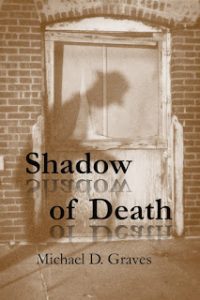 Pete needs Ralph to help him solve a crime. With a postcard Ralph sent to his father as a clue, Pete traces him to Hot Springs, and that trip allowed me to write about the city and introduce new characters.
Pete needs Ralph to help him solve a crime. With a postcard Ralph sent to his father as a clue, Pete traces him to Hot Springs, and that trip allowed me to write about the city and introduce new characters.
So, the research consisted of visits to Hot Springs, reading brochures and booklets we found there, talking to the local folks, reading information on the internet, and also watching a very informative video on the early days of baseball’s spring training.
My research on Wichita began with sidewalk strolls downtown, and that led me to visit local museums. I found Pete’s Jones Six automobile at The Wichita-Sedgwick County Historical Museum and the Stearman Kaydett Trainer airplane that played a role in the first book is located in The Kansas Aviation Museum. I’ve read dozens of microfilmed newspapers at the Wichita Public Library. Sometimes the advertisements tell me as much about the era as the news columns do. Of course, the internet is loaded with photographs and information, but I enjoy visiting the older sections of town to get a feel for the time and place. The city is its own library, and there’s always something new to discover.
Pete Stone loves baseball. Does Mike Graves love it as much as Pete?
Yes, baseball has always been my favorite sport. My father was a fan, and it was the first sport I played as a child. I grew up with what I now refer to as the three B’s: baseball, books and a bicycle. As long as I had those, I was a happy youngster. When I was twelve, we lived in New Jersey and visited New York for my first major league ballgame. We only had black-and-white TV at home, so seeing a game in color was a big thrill. I still recall the pounding in my chest when we came out of the Yankee Stadium tunnel, and for the first time I saw the contrasting colors of that cathedral – the red clay warning track set against immaculate green grass, all beneath a blue summer sky. I’d never seen anything so beautiful. I still have my ticket stub. A seat behind the dugout went for $2.50 in 1960.
These books are fun to read both for the fascinating story and for the characters. Your gumshoe Pete Stone is both laid back and smart. As a narrator he has a unique way of phrasing things that aligns with both his job as a private investigator and with time period. As a writer I know there must have been some struggles and frustrations while writing these books, but the flow is so smooth, that as a reader, it seems like the story must have written itself. Did the narrative and the dialogue come easily to you or did you have to fight for it?
That’s a good question, and I think the answer lies somewhere in the middle. I’ve received so much good advice from writers who have come before me that it’s difficult to acknowledge all of them, but they have eased the process for me. Ray Bradbury wrote that he would write a list of nouns and use those as the basis for a story. That led me to create and keep a list of 1930s expressions that I drop into my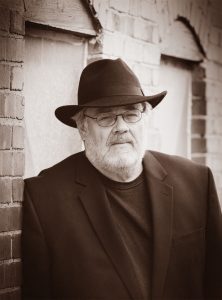 stories.
stories.
Lawrence Block, the creator of the Matthew Scudder detective series set in New York City, included wonderful descriptions of place. He might mention a pocket park on Third Avenue, for example, and a Google search shows the park exactly as he describes it. I recall this when I write about the various places Pete Stone visits and try to make then memorable.
John D. MacDonald created Travis McGee, a detective, salvager and philosopher who lives aboard a houseboat in Florida. I think of Travis often when I write about Pete.
Over the past few years, I’ve created about twenty pages of Pete Stone notes, little things gathered from different sources that add to his stories, notes from museums, notes taken from Turner Classic TV movies, notes from microfilmed newspapers, character notes, and so on. I keep notes on specific items I want to include in the current story, too. Of course, not everything goes into every story. If I tried to include everything, the story would read like a laundry list and bore the reader.
I have struggles, moments when I have to back away and think through a scene before I continue writing. However, I also have moments of flow when the words come easily. I should mention that I rewrite a lot as I write which goes against most of the writing advice I’ve read. I try to get a paragraph the way I want it to read before I move on, and I often rewrite that paragraph again later.
I’m always curious about the work habits of other writers. Do you have a regular writing time and writing place? Can you write anywhere, anytime, or do you have to be in a certain place?
I’ve tried to keep to a schedule, but I often fail. I’m more productive earlier in the day than I am at night. Now that I’m retired, I do most of my writing from mid-morning to mid-afternoon, but I think about my stories and make notes on my stories anywhere at any time. I do most of my composing at the keyboard, but I try to compose with pen and paper, too. I prefer to write prose at the keyboard, but I need pen and paper to write a poem.
What are you working on now? I can easily imagine a dozen or more Pete Stone mysteries, and I would read them all. Is there a third Pete Stone book on its way?
Yes, I’m working on a third story tentatively titled All Hallows’ Shadows. The first book takes place in the spring and begins with the opening of baseball season. The second book takes place in the summer. The third book will take place at the end of the baseball season. It opens in October during the World Series between the New York Yankees and the New York Giants. It will end with a Halloween 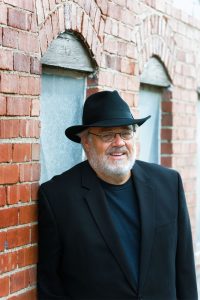 party. A central character in book three is an English professor at Wichita University, now Wichita State University, who hires Pete to investigate a recent murder and prove to the police that the suspect they have behind bars is innocent.
party. A central character in book three is an English professor at Wichita University, now Wichita State University, who hires Pete to investigate a recent murder and prove to the police that the suspect they have behind bars is innocent.
An underlying theme in the series is a love story between Pete Stone and the widow Lucille Hamilton. My grandparents divorced when my dad, their youngest child, was away in the Navy. Pete’s second wife was named Lucille. I plan on having Pete Stone and Lucille Hamilton develop a relationship in the third book.
Thank you, Mike! Michael Graves is not only a fabulous author, he’s just a fine human being. As a writer and a reader, I love to support that kind of a person by buying his or her books, telling others about their books. I hope that you do the same.
Mike lives in Emporia, Kansas, and so naturally his books are available at Ellen Plumb’s City Bookstore, 1122 Commercial, Emporia, KS. Please shop at independent bookstores – they are always strong promoters of local writers. Mike’s books can be ordered online through Ellen Plumb’s or through Meadowlark Books.
BUY MIKE’S BOOKS! The Pete Stone stories catch you and don’t let you go until you hit the final page. Pete Stone gets beat up a little (or a lot) but they are fun to read!
All photos, author photos and book covers, are by Dave Leiker.


